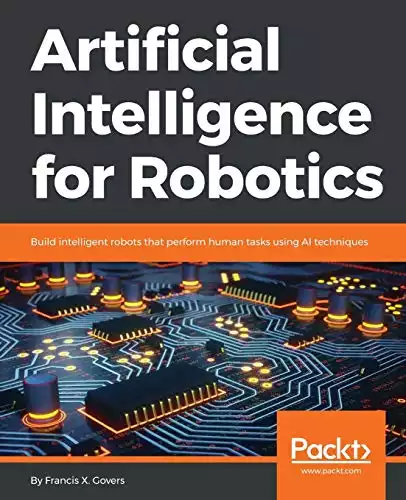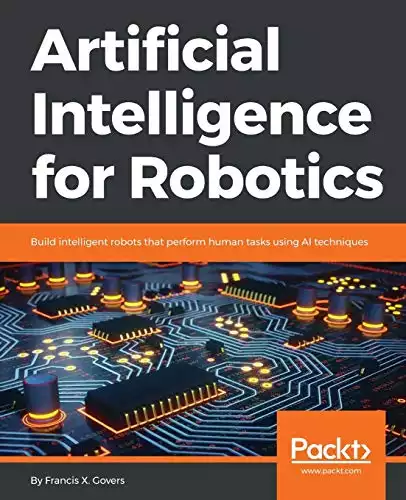Introduction
The word robotics was derived from the word robot, which was introduced to the public by Czech writer Karel Čapek in his play , which was published in 1920. R.U.R. (Rossum’s Universal Robots)
According to Merriam-Webster – Robotics is technology dealing with the design, construction, and operation of robots in automation
Table of contents
Is robotics computer science or engineering?
Hardware and software are two components of robotics. Engineering is used to design the physical aspects of the robot and computer science is used to design software that gives intelligence to the machine to do its task. This makes robotics a multidisciplinary branch of engineering and computer science. Robotics is used to automate tasks and reduce human intervention.
These fundamental components form the basis of what makes up a robot. There are three basic components that make up a typical robot –
- Mechanical Components
- Electrical Components
- Software Components.
A slight deeper dive would show us that robotics need a movable physical structure, a motor of some sort, a sensor system, a power supply, and software programming that provides intelligence that controls all of these components.
Mechanical Components – Robotic Hardware
Robots are all constructed in some way, be it a frame, form, or shape, that is designed specifically to accomplish a particular task. The mechanical engineering aspect is mostly for designing the shape of the robot for its intended purpose. Robots have electrical components that power and control the machinery. These components help power the robot and let it do its intended task.
In the area of robotics, mechanical components – or robotic hardware – form the backbone of the physical structure and movement capabilities of robots. This aspect leans more towards engineering, particularly mechanical engineering, although it’s still intertwined with computer science in the context of robotic control systems. Understanding the interaction of mechanical systems is essential to develop advanced manufacturing robots that can execute complex tasks with precision and accuracy.
Mechanical engineers design and build the actual robot controllers, the hardware systems that include elements such as gears, levers, and motors. These components drive the physical actions of a robot, allowing it to manipulate its environment or move around. The motor power, for instance, is a crucial mechanical factor that dictates a robot’s capacity to carry out work, be it lifting a load in an industrial context or navigating a dense environment. Mechanical engineers also work on the development of new materials and technologies, such as artificial muscle technology, which has the potential to create more fluid and lifelike movements in robots.
Another important area of mechanical components in robotics is the design and development of interconnected robots or robot swarms. This requires not only a deep understanding of individual robot mechanics but also a grasp of how these robots can interact and collaborate to achieve a common goal. From designing robotic arms that can work together on an assembly line, to creating a swarm of micro-robots for exploration or search and rescue operations, these applications demand a seamless integration of mechanical design, computer science principles, and advanced control systems. Thus, while the mechanical components of a robot fall squarely within the realm of engineering, their successful operation is still reliant on the computational tools and techniques provided by computer science.
Electrical Components – Robotic Electronics
The robotic machinery is powered and controlled by electrical components in the robot. The electric current travels through wires to engage a system of sensors, motors and originates from a power source or battery, and works with the help of basic electrical circuit. Robots are controlled electrically through motors, rather than their mechanical components, and electrical signals are used for different types of sensing, such as the sense of heat, sound, position, or the condition of the robot’s energy supply, as well as their operation (Robots require some degree of electrical energy to activate and move their motors and sensors).
In the field of robotics, electrical components and robotic electronics constitute an essential aspect that requires both the expertise of computer scientists and robotics engineers. This involves the design, implementation, and optimization of a variety of components that allow the robot to function effectively and interact with its environment. One of the key components is the robot controllers, the “brain” of the robots that govern their operations.
Robotic controllers are essentially sophisticated computer systems, and their development leans heavily on computer science. They contain the algorithms and data structures that allow the robot to interpret sensor data, make decisions, and send commands to the robot’s actuators. The controllers may also handle more complex tasks such as path planning, obstacle avoidance, or even cooperation between robots in multi-robot systems. Designing the architectures for these controllers requires a deep understanding of algorithms, real-time computing, and software engineering principles.
From an engineering perspective, the electrical components of a robot also encompass the actual physical devices that allow the robot to sense its environment and carry out actions. These can include sensors (such as cameras, LIDAR, or touch sensors), actuators (such as electric motors that drive the robot’s movements), and the circuits and power systems that connect these components and provide them with energy. In humanoid robots or robot arms, for example, a number of electric motors may be used to control the different joints, and managing the power and coordination of these motors is a significant engineering challenge. Therefore, while computer science provides the fundamental tools for designing the “brain” of the robot, it is engineering that materializes this into actual functioning systems, bridging the gap between virtual algorithms and physical actions.
Software Components – Robotic Software
The majority of robots are programmed with some form of software component. It is the program that a robot uses to make the decision as to how or when to take action. A robot’s performance is directly correlated to the quality of its software. No matter how great the robot’s mechanical and electrical construction, if it’s software is poorly constructed it will not perform at its best.
There are three different types of robotic programs:
Manual control
These robots work when a human operator physically operates the mechanical, electronic, or software areas of the robot.
Manual control in robotics, one of the earlier concepts in the field, is an area where both computer science and engineering intersect. It pertains to systems where a human operator directly controls the movements and actions of a robot. This can be seen in a wide range of robotic technology, from industrial robotics where operators use control panels to manipulate robotic arms, to mobile robots or drones that are steered via remote controls or even gesture-based interfaces.
From the perspective of computer science, the focus is on developing robust and user-friendly interfaces that allow effective human-robot interaction. This may involve graphical user interfaces, joysticks, motion tracking devices, or more sophisticated systems that can interpret voice commands or other forms of human input. The input from these interfaces is processed and translated into commands that the robot can execute. Advanced robotic concepts such as “telepresence” fall under this category, where operators can control robots remotely, even experiencing the robot’s environment via sensory feedback like video or haptic feedback.
Engineering plays a significant role in the design and implementation of manual control systems in robotics. This includes designing the mechanics and electronics of the robot to respond accurately and smoothly to the operator’s commands. It also involves the engineering of safe and reliable systems, which is crucial in contexts like industrial robotics where the robots can be large, powerful, and potentially hazardous if not controlled correctly. With the rise of alternative types of robots such as social robots or co-bots, there is an increased need for designing robots that can operate safely and intuitively alongside humans, which brings additional engineering challenges. Therefore, whether considering the earlier or newer generations of robots, both computer science and engineering play vital roles in the development and advancement of manual control in robotics.
Also Read: Automation vs AI: What is the Difference, Why is It Important?
Autonomous control
Autonomous control in robotics is a field that significantly straddles both computer science and engineering. This is especially true when considering the development and operation of real robots that are tasked with navigating and interacting with complex, dense, and sometimes dangerous environments. These machines, such as a robot police officer or an exploration drone, must be designed with a great deal of autonomy to effectively perform their roles, and this requires a blend of expertise from both computer science and engineering.
In the realm of computer science, engineers utilize algorithms for environment mapping methods, object recognition, path planning, and machine learning for decision making. This involves designing artificial systems that can process vast amounts of sensory data, interpret it, and make intelligent decisions in real time. For instance, a robot police officer navigating through a busy city or a rescue robot in a disaster-stricken area would require advanced AI-based systems to effectively map and navigate their environments, recognize objects, interact with humans, and adjust their actions based on the situations they encounter.
From an engineering perspective, the practical implementation of these autonomous systems into real robots requires extensive engineering knowledge. This encompasses mechanical and electrical engineering for the design and construction of the robot’s body and components, as well as computer engineering for the integration of sensors, actuators, and processors. Control specialization, an important aspect of robotics engineering, ensures that the robot’s movements and actions are precise, reliable, and safe. The design and implementation of a robot capable of functioning in dense and dangerous environments demands not only the creation of an intelligent control system but also a robust, durable physical design. The development of truly autonomous robots relies on a harmonious combination of both computer science and engineering principles.
Also Read: Inside Arrival’s Futuristic Factory.
Artificial Intelligence based control.
Robotic systems, in their complexity and multifaceted nature, necessitate expertise from both computer science and various engineering disciplines. On one hand, computer science, particularly the field of artificial intelligence, plays a pivotal role in developing advanced algorithms necessary for autonomous functioning of robots. The understanding of machine learning, deep learning, and data science helps in creating more intelligent and efficient algorithms that allow for human-robot interaction, navigation, object recognition, and much more. The development of autonomous drones and humanoid robots, for instance, heavily relies on the application of these advanced artificial intelligence techniques.
On the other hand, engineering disciplines are indispensable in the design, construction, and testing of robots. Robotic engineers use principles from mechanical, electrical, and computer engineering to design and build various types of robots – from industrial robots used in manufacturing to collaborative robots (cobots) working alongside humans. These engineering disciplines help in constructing the physical elements of a robot and in ensuring that the robots can safely and effectively interact with their environment. Aspects such as power consumption, heat dissipation, sensor placements, and material selection are tackled through engineering principles.
The intersection of computer science and engineering in robotics becomes especially evident in the design and implementation of robot controllers. Here, advanced robots require sophisticated, AI-based controllers capable of managing and coordinating various sensors, actuators, and interconnected subsystems. An AI-based controller can adapt and learn from its environment, making the robot more robust and efficient in performing its tasks. Thus, it’s the synergy between computer science and engineering that allows us to develop increasingly sophisticated, versatile, and autonomous drones, collaborative robots, and other types of advanced robots. It’s clear that to fully leverage the potential of robotics, a strong foundation in both computer science and various engineering disciplines is vital.
It is possible for robots using artificial intelligence to interact with their environment on their own without a control source, and can compute their reactions to objects and problems they encounter using their pre-conditioned software. As these sorts of robots are put through their paces, they typically learn continuously over the course of time.
Also Read: AI In Robotics: an Assimilation For The Next Phase In Technology.
Conclusion
Robotics is an inherently multidisciplinary field that blurs the lines between computer science and engineering. A variety of robotic forms, from industrial robots and social robots to more specialized devices such as robotic arms, are all testament to this interplay of disciplines. Industrial robots, for instance, require a strong grounding in mechanical and electrical engineering for their design and construction, but they also lean heavily on computer science for their control systems and ability to interact with the environment.
Robotic technology has grown enormously in recent years, with a wide range of applications across diverse sectors driving a high annual growth rate for the industry. The job market for robotics engineers is correspondingly robust, offering a plethora of opportunities for those who can straddle the divide between computer science and engineering. The architectures for robot controllers, one of the crucial features of robot controllers, is an area where this cross-disciplinary expertise is particularly valued. It’s here where the hardware and software of robotics intersect, necessitating an understanding of both mechanical components and computer algorithms.
Human interaction with robots, whether it’s with an industrial robot in a factory or a teaching robot in a classroom, has emphasized the need for sophisticated robotics and intelligent systems that can understand and respond to human behavior. Human-robot interaction is a burgeoning field that draws heavily on both computer science, for processing and interpreting human inputs, and engineering, for the physical design and implementation of the robot. Thus, the question of whether robotics is computer science or engineering is a false dichotomy. In fact, the strength of robotics lies in its ability to draw from both disciplines, creating a holistic approach that allows for the creation of highly sophisticated, interactive, and beneficial robotic systems.
References
Brugali, Davide. Software Engineering for Experimental Robotics. Springer, 2009.
Cavalcanti, Ana, et al. Software Engineering for Robotics. Springer Nature, 2021.
Quigley, Morgan, et al. Programming Robots with ROS: A Practical Introduction to the Robot Operating System. “O’Reilly Media, Inc.,” 2015.
Ramirez, Alejandro Rafael Garcia, and Augusto Loureiro Da Costa. Robotics Software Design and Engineering. BoD – Books on Demand, 2021.











